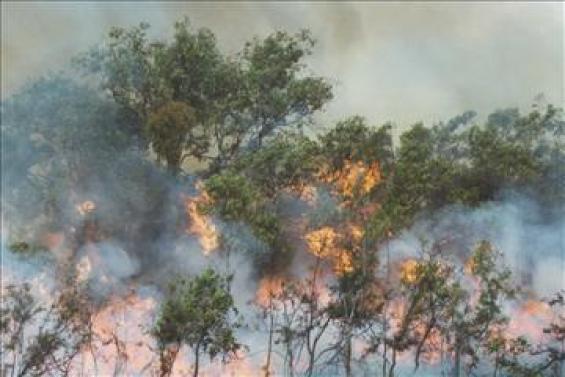New guidelines for predicting fire behaviour

The findings of Australia’s most extensive study to date of the behaviour of high-intensity bushfires in eucalypt forests – Project Vesta – provides valuable new tools and information for fire managers across Australia.
The Bushfire CRC backed the multi-million dollar study conducted by the Department of Environment and Conservation, Western Australia and Ensis – CSIRO’s forestry joint venture with New Zealand’s Scion. It was released in Perth by the Western Australian Environment and Climate Change Minister, David Templeman
Bushfire CRC Program Leader and Ensis Bushfire Research Leader Jim Gould says the 10 year study provided data to develop a better system for predicting the spread and intensity of wildfires. “Existing systems for predicting forest fire behaviour work well for low-intensity fires such as prescribed burns, but can under-predict the spread of high-intensity summer fires by a factor of three or more,” he says.
“As a result of this research we have developed a new bushfire spread model for summer wildfires that will provide the basis for a national fire behaviour prediction system for dry eucalypt forests. The study also provides new information of critical importance to firefighter safety by highlighting the sudden jump in speed and intensity of a fire that takes place when a wind change turns a flank-fire into a head-fire,” Mr Gould says.
Former project leader, CSIRO Honorary Fellow Phil Cheney, says the research resulted in a number of important breakthroughs that will improve the ability of fire agencies to manage fire risk. “This study has enabled us to get a measure of factors that have not previously been quantified, such as establishing the parts of the fuel structure that influence the rate of spread,” he says.
“As a result, we now have a vastly improved understanding of the fundamental relationships between fire behaviour and all fuel types of similar structure. This enabled us to develop a new field guide for fire managers that relates fire spread to fuel structure and weather conditions across the entire country whereas, previously, fire behaviour guides were specific only to certain vegetation types,” Mr Cheney says.
Bushfire CRC and Department of Environment and Conservation bushfire scientist Dr Lachie McCaw says one of the key findings from Project Vesta is that hazard reduction by prescribed burning will reduce the rate of spread, flame height and intensity of a fire.
“Prescribed burning will also reduce the number and distance of spot fires by changing the structure of the fuel bed and reducing the fuel load,” he says. “These effects may persist for up to 20 years in forests containing rough-barked trees and shrubby under-storey.
For copies of the Project Vesta from CSIRO Publishing visit www.publish.csiro.au/pid/5993.htm


